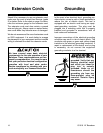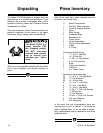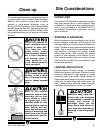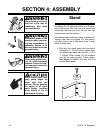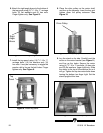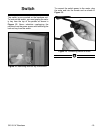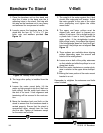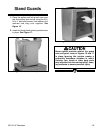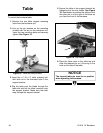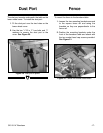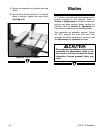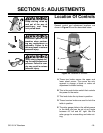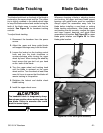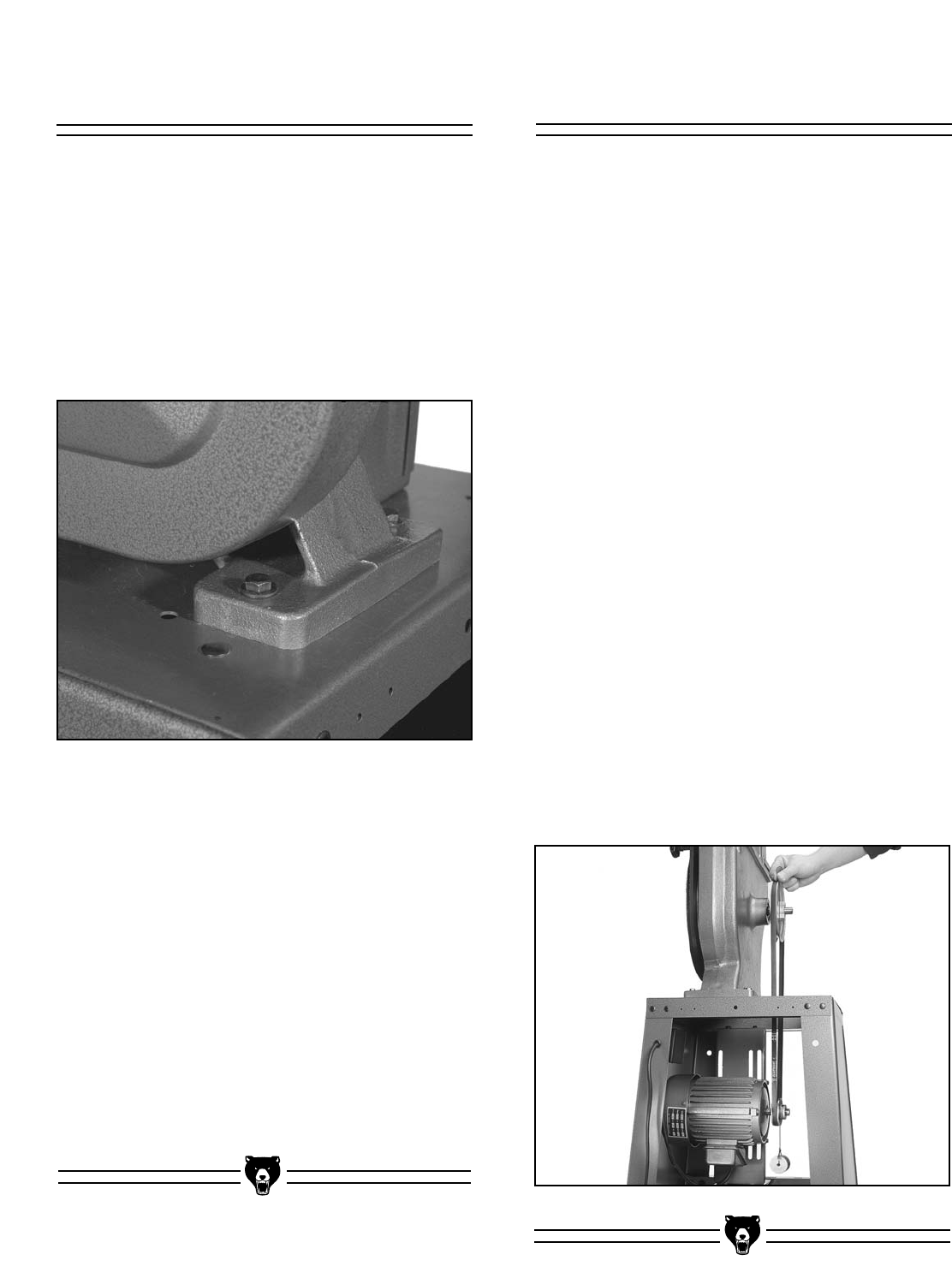
-14- G1019 14'' Bandsaw
V-Belt
1. The weight of the motor against the V-belt
should offer adequate belt tension. Adjust
the motor parallel to the axis of the upper
drive shaft/pulley and tighten the motor
mount bolts.
2. The upper and lower pulleys must be
aligned with each other to prevent pre-
mature V-belt wear. Set a straight edge (or
a plumb bob if saw is level) against the
upper pulley. If the straightedge touches
both pulleys evenly, the pulleys are aligned.
If the straightedge does not touch both pul-
leys evenly, the pulleys are not aligned. See
Figure 15.
3. Three options are available when aligning
pulleys depending upon the amount and
nature of the misalignment:
A. Loosen one or both of the pulley setscrews
on their shafts and slide the pulleys in or out
along their shafts.
B. Rock the motor clockwise or counter-clock-
wise in relation to the upper drive shaft/pul-
ley.
C. Moving the lower portion of the motor mount
bracket in or out.
Remember to retighten the setscrews and bolts
when finished.
Figure 15. Aligning pulleys with plumb bob.
Bandsaw To Stand
1. Place the bandsaw unit on the stand and
align the 4 holes in the base over the 4
mounting holes in the stand. Get help with
this step as the bandsaw unit is very heavy
and awkward for one person to handle.
2. Loosely secure the bandsaw base to the
stand with the four (4)
5
⁄16"-18 x 1
1
⁄2" hex
bolts, nuts, and washers provided. See
Figure 14.
Figure 14. Loosely fasten to base.
3. The large drive pulley is installed from the
factory.
4. Loosen the motor mount bolts. Lift the
motor up high enough to slip the V-belt over
both pulleys. Set the motor back down to
the end of its travel. V-belt alignment and
tensioning will be covered in the next sec-
tion.
5. Move the bandsaw back and forth on the
stand to ensure that the bandsaw stand is
seated properly. Ensure that the stand is
symmetrical when viewed from the front
and the side. Tighten all fasteners except
for the motor mount bolts.



